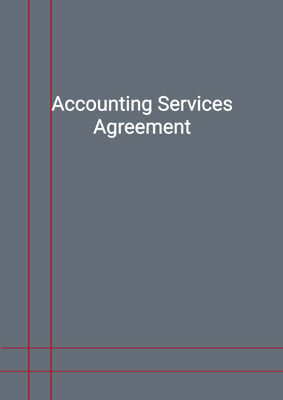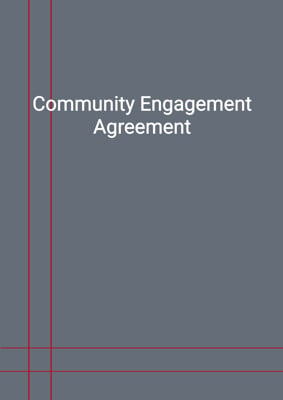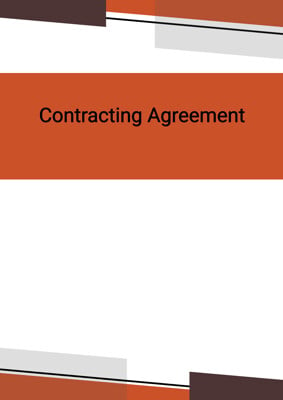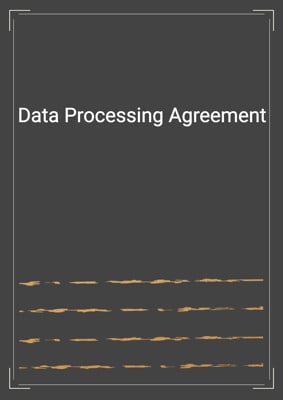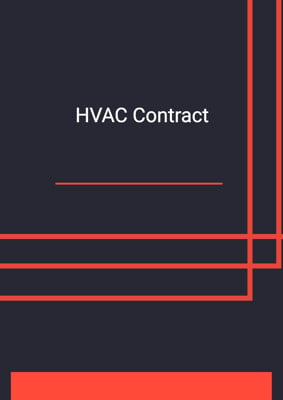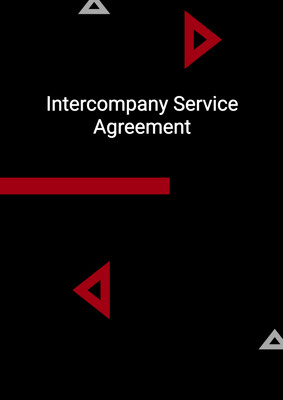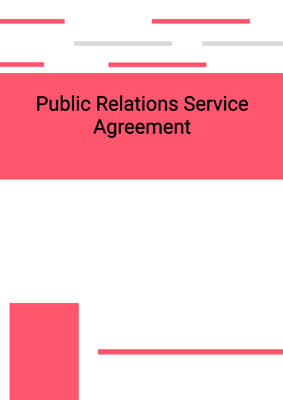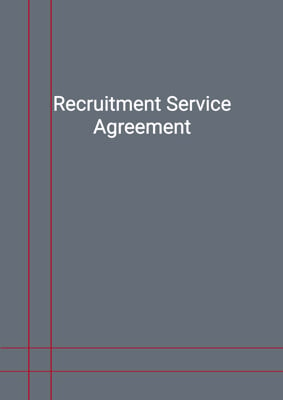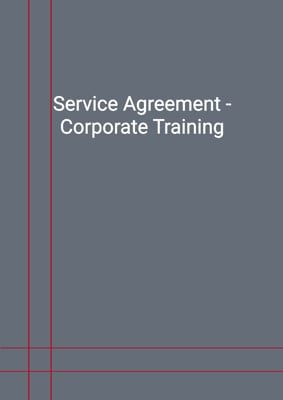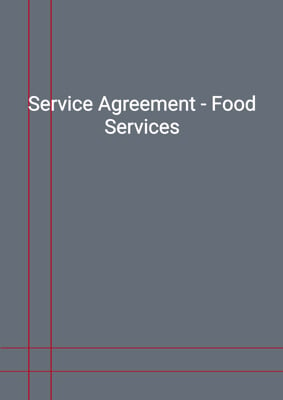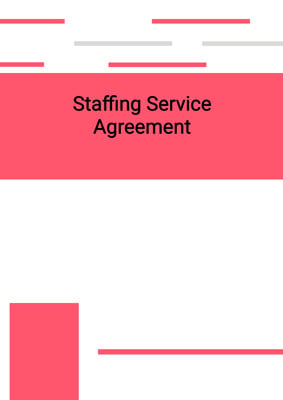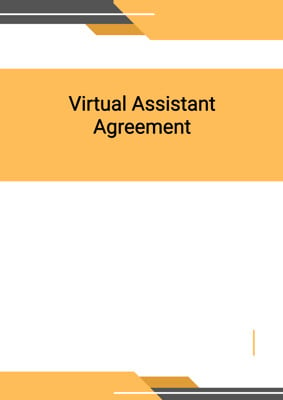How to Tailor the Document for Your Need?
01
Create Document
Fill in the details of the parties. You can click the "Fill with Member’s Information" button to complete it with information saved to your account.
02
Fill Information
Please fill in any additional information by following the step-by-step guide on the left hand side of the preview document and click the "Next" button.
03
Get Document
When you are done, click the "Get Document" button and you can download the document in Word or PDF format.
04
Review Document
Please get all parties to review the document carefully and make any final modifications to ensure that the details are correct before signing the document.
Document Preview
Document Description
The Contracting Agreement is a legally binding document that outlines the terms and conditions between two parties, namely the Company and the Contractor. This agreement is important as it establishes the scope of work, responsibilities, and obligations of both parties involved. It ensures that both parties are aware of their rights and obligations, and provides a framework for resolving any disputes that may arise.
The entire document consists of several sections that cover different aspects of the agreement. The first section provides an introduction and identifies the parties involved. It includes the names and addresses of both the Company and the Contractor. This section also clarifies that the agreement does not create a partnership or joint venture between the parties.
The second section focuses on the services to be performed by the Contractor. It specifies the nature of the services and any additional services that may be agreed upon in writing. It also emphasizes that the Contractor will perform the services as an independent contractor and will report on performance reviews as required by the Company.
The third section deals with the terms of the agreement. It states that the services should be completed by a specific completion date. It also mentions that the agreement will terminate one year after the date of signing, unless otherwise specified.
The fourth section addresses the fees and expenses associated with the services. It outlines the payment method and disbursement schedule agreed upon by both parties. It also states that the Contractor is responsible for any applicable taxes.
The fifth section emphasizes the importance of compliance with laws. Both parties are required to comply with all applicable laws, ordinances, codes, and regulations. They must also establish and maintain proper records as required by law.
The sixth section introduces the contingency plan. The Contractor is obligated to provide a copy of the plan to the Company and inform them of any changes or improvements. This ensures that the Company is aware of any potential risks or disruptions.
The seventh section outlines the responsibilities of both parties. The Company agrees to facilitate the provision of services, while the Contractor agrees to carry out their obligations under the agreement. The Contractor is also prohibited from further subcontracting the services.
The eighth section addresses liabilities and indemnities. The Contractor is required to promptly notify the Company of any delays, problems, or complaints related to the services. The Contractor is also liable for any personal injury or death arising from the services, unless due to the Company's neglect or default. The Contractor must maintain appropriate insurance coverage.
The ninth section focuses on confidentiality. Both parties agree to keep all information provided by the other party confidential. They are only allowed to disclose the information to certain authorized parties, such as affiliates, employees, or regulatory authorities. Breach of confidentiality may result in specific performance or injunctive relief.
The tenth section states that neither party can assign their rights or obligations under the agreement without the written consent of the other party. The terms and conditions of the agreement are binding on both parties and their successors.
The eleventh section confirms that each party has the necessary corporate authority to enter into the agreement. It also allows for the negotiation of additional documents or agreements if necessary.
The twelfth section specifies the contact details for sending notices and other communications between the parties.
The thirteenth section states that the agreement constitutes the entire agreement between the parties and supersedes any previous agreements. It can only be amended in writing by both parties.
The fourteenth section mentions that the agreement is governed by a specific jurisdiction's laws.
In summary, the Contracting Agreement is a comprehensive document that covers the scope of work, responsibilities, and obligations of both the Company and the Contractor. It ensures that both parties are aware of their rights and obligations and provides a framework for resolving any disputes that may arise.
How to use this document?
1. Enter the Contractor's and Customer's information in the agreement, including their principal place of business. This ensures that both parties are clearly identified.
2. Clearly specify the agreed price and completion date of the work to be carried out by the Contractor. This will ensure that both parties are aware of the expectations and deadlines.
3. Clearly describe the type(s) of services to be provided by the Contractor. This ensures that both parties are aware of the scope of work and can avoid any misunderstandings.
4. Both parties should agree on the length of warranty and time of payment after the completion of the work. This ensures that both parties are aware of the payment terms and the length of the warranty.
5. If the work is not completed by the completion date, specify the amount of damages per week that the Customer is entitled to. This ensures that both parties are aware of the consequences of non-completion.
6. The Contractor should report to the Company if there are any material changes in the services or any material problems, incidents, accidents, or disruptions that have a material impact on the services.
7. The Contractor should obtain and maintain the necessary licenses, permits, consents, and approvals to provide the services.
8. The Company agrees to facilitate the provision of the services by the Contractor.
9. The Contractor agrees to carry out all obligations, duties, and undertakings under the agreement in accordance with the terms and conditions.
10. The Contractor should not further subcontract the services without the written consent of the Company.
11. The Contractor should maintain all necessary facilities, equipment, supplies, insurance, and other resources to perform the services.
12. The Contractor should promptly notify the Company of any delays, problems, or complaints related to the services. They should also provide additional services to rectify any defects in the provision of the services.
13. The Contractor is liable for any personal injury or death arising from the services, unless due to the Company's neglect or default. They should maintain appropriate insurance coverage.
14. Both parties should keep all information provided by the other party confidential, except for authorized disclosures to affiliates, employees, or regulatory authorities.
15. Neither party can assign their rights or obligations under the agreement without the written consent of the other party.
16. Both parties should comply with all applicable laws, ordinances, codes, and regulations.
17. The agreement constitutes the entire agreement between the parties and supersedes any previous agreements.
18. Any notices or communications between the parties should be sent to the appropriate contact details provided.
19. The agreement is governed by a specific jurisdiction's laws.
Not the right document?
Don’t worry, we have thousands of documents for you to choose from:

